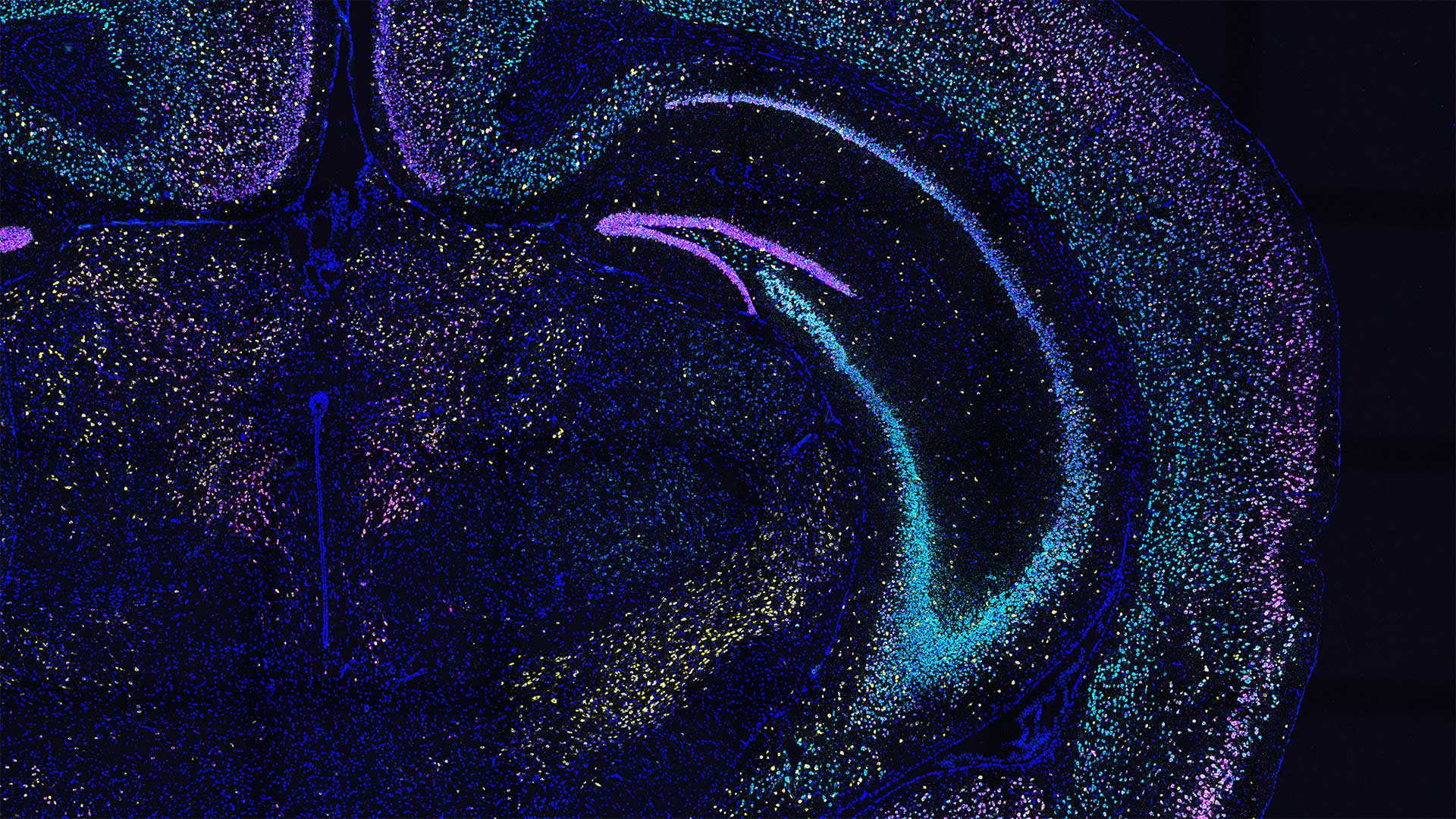Cold Spring Harbor Laboratory (CSHL) and Veranome Biosystems LLC, an Applied Materials company, are collaborating to bring engineering solutions from the semiconductor manufacturing industry to neuroscience. Veranome is licensing CSHL brain mapping and spatial transcriptomics (cell-characterization) technologies that are based on in situ sequencing methods. CSHL Professor Anthony Zador has developed mapping technologies that identify connections of individual brain cells, pinpoint where a cell is located, and determine the specific function of that cell. Detailed wiring diagrams—connectomes—for the brain are critical for understanding brain development, function, and disease. This new collaboration has the potential to accelerate the acquisition of this wiring and functional data.
Zador’s technologies, called MAPseq and BARseq, use genetic barcodes, or short sequences of DNA and RNA, to trace thousands of brain circuits simultaneously. This approach increases the number of neuronal connections that can be traced at a time versus traditional microscopy-based methods that rely on fluorescent markers or dyes to trace neuronal activity. The palette of dyes for these traces is limited, so scientists can only inject a few different colored dyes into two or three parts of the brain at a time. They have to repeat this process, in new regions, to see more connections—adding time and expense to the process. Zador’s genome sequencing technology approach takes advantage of the larger diversity of genetic barcodes and allows researchers to label many neurons and brain regions at once.
MAPseq labels each neuron with a unique genetic barcode so that researchers can determine where a neuron projects by dissecting brain regions of interest and searching for the barcode. BARseq is the next generation of MAPseq, allowing barcodes to be sequenced within a tissue, providing a method for in situ sequencing in neurons. This approach, called spatial transcriptomics, preserves anatomical information and allows scientists to examine cellular connectivity at greater resolution, which has several possible applications including cell typing and brain mapping.
Veranome Biosystems has developed the Veranome Spatial Analyzer that provides sub-cellular spatial resolution of hundreds of RNA targets, plus protein biomarkers to characterize cell types and understanding of the cellular interactions within tissue architecture. This analyzer enables deep understanding of the molecular organization of healthy and diseased tissues.
According to Zador, the limits of the MAPseq and BARseq methods are the many, complex steps involved in the process. “The customization required to collect the data on neurons using the genetic barcode methods is like an art form,” says Zador, “This makes these powerful technologies difficult to deploy. I am excited about the potential for automation to simplify and accelerate data collection and analysis.”
Written by: Dagnia Zeidlickis, Vice President, Communications | zeidlick@cshl.edu | 516-367-8455
